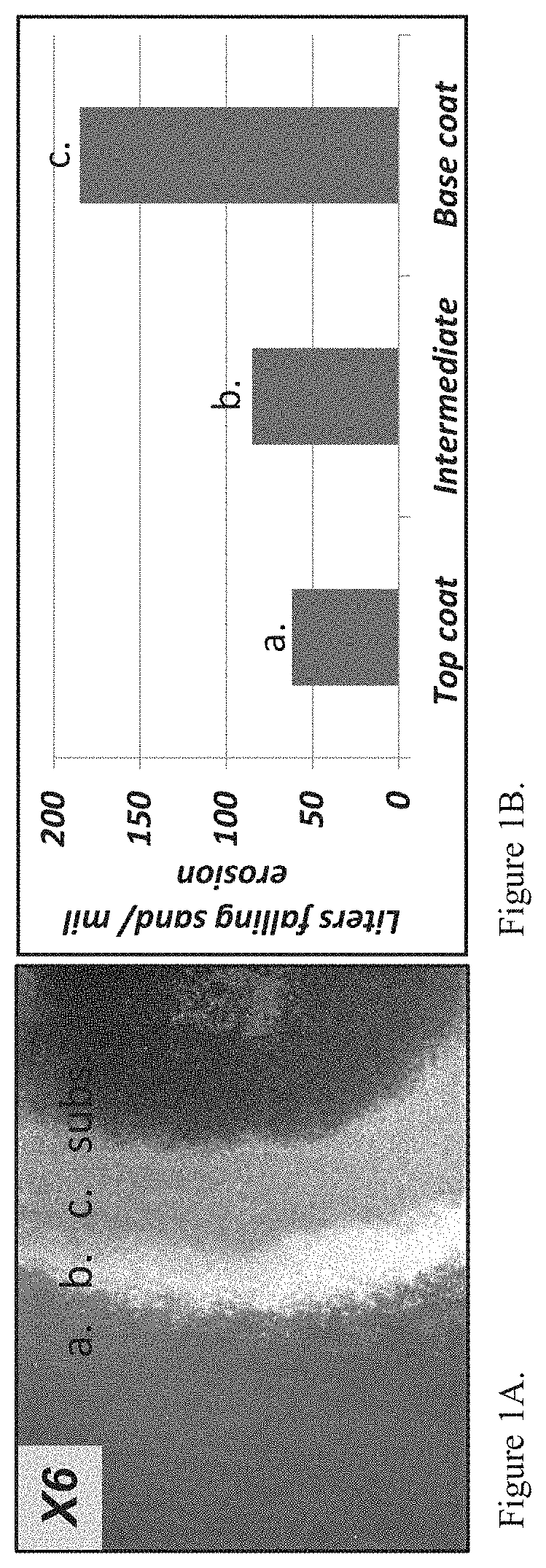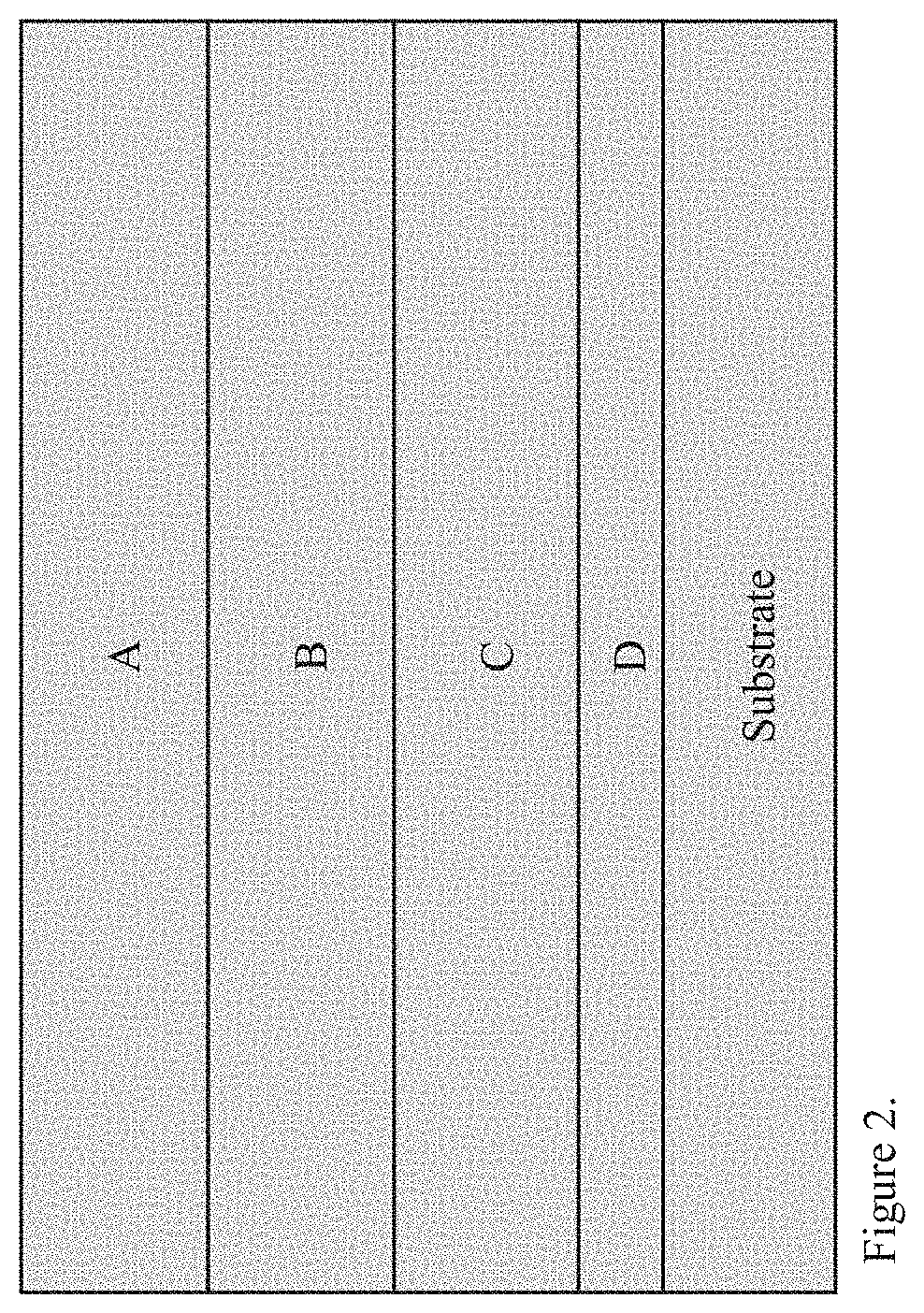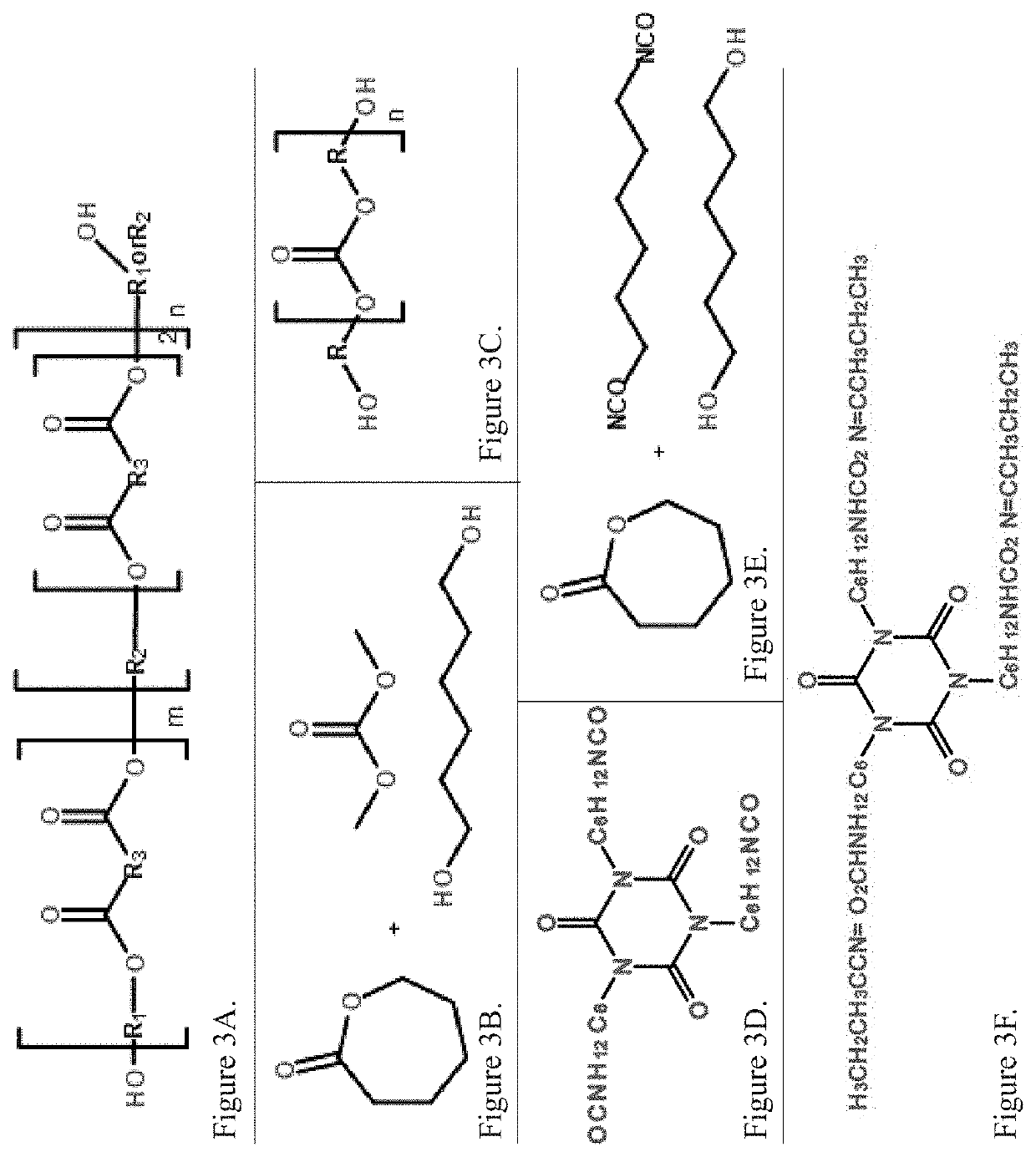Erosion and Corrosion Resistant Overlay Coating Systems for Protection of Metal Components
a technology of corrosion resistance and overlay coating, applied in the direction of anti-corrosion paints, polyurea/polyurethane coatings, coatings, etc., can solve the problems of affecting the ability of coatings to perform their primary functions, the lifespan of the protected substrate, and the insufficient performance of erosion resistance for certain applications, so as to enhance particle erosion resistance and enhance the effect of erosion resistan
- Summary
- Abstract
- Description
- Claims
- Application Information
AI Technical Summary
Benefits of technology
Problems solved by technology
Method used
Image
Examples
examples
[0075]Liquid coatings of Example Formulations 1, 2, 3, and 4 were produced. The example liquid coatings were comprised of a two-component system. The base components were comprised of specific amounts and types of solutions of different polyols, pigments, solvents and other additives as shown in Table 1. Table 1 provides a tabular summary of each of the Example Formulations 1-4 that were tested. Each Example Formulation consisted of a certain weight percentage of one or more Polyols 1-3; Isocyanates 1-3; Pigments 1-3; additives and solvents. The curative component was comprised of specific amounts of solutions of polyisocyanates as also shown in Table 1. The curative and base were admixed to yield a ratio of 1.2 eq isocyanate to 1.0 eq. alcohol. In the experiments of Table 1, the composition of Isocyanate 1, Isocyanate 2 and Isocyanate 3 were controllably varied. The polyol compositions (34 wt. % Polyol 1, 35 wt. % Polyol 2, 31 wt. % Polyol 3) were each held constant. In other words...
PUM
| Property | Measurement | Unit |
|---|---|---|
| particle size distribution | aaaaa | aaaaa |
| particle size distribution | aaaaa | aaaaa |
| particle size distribution | aaaaa | aaaaa |
Abstract
Description
Claims
Application Information
 Login to View More
Login to View More - R&D
- Intellectual Property
- Life Sciences
- Materials
- Tech Scout
- Unparalleled Data Quality
- Higher Quality Content
- 60% Fewer Hallucinations
Browse by: Latest US Patents, China's latest patents, Technical Efficacy Thesaurus, Application Domain, Technology Topic, Popular Technical Reports.
© 2025 PatSnap. All rights reserved.Legal|Privacy policy|Modern Slavery Act Transparency Statement|Sitemap|About US| Contact US: help@patsnap.com



